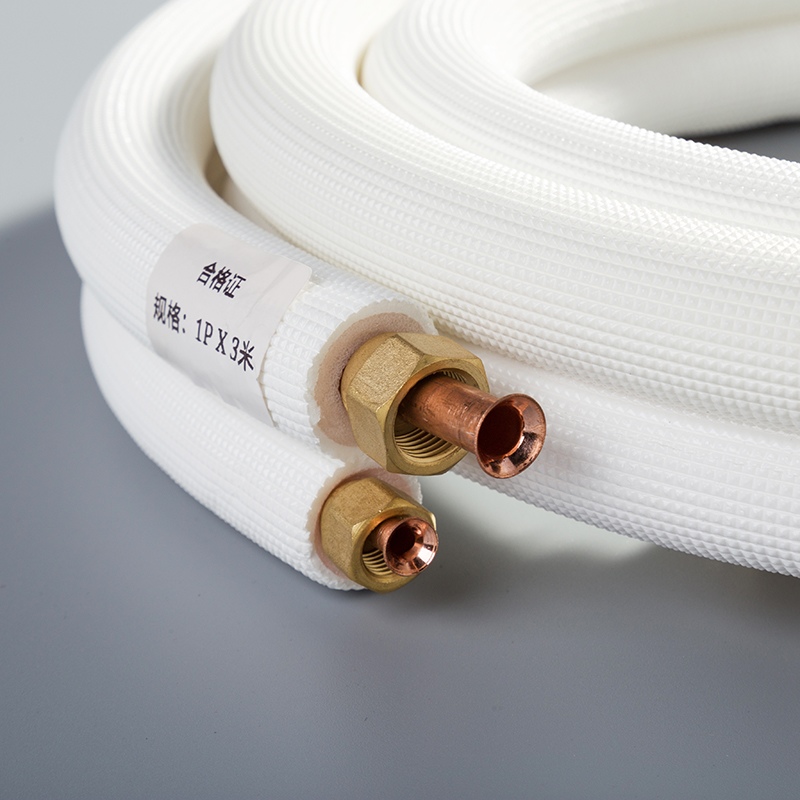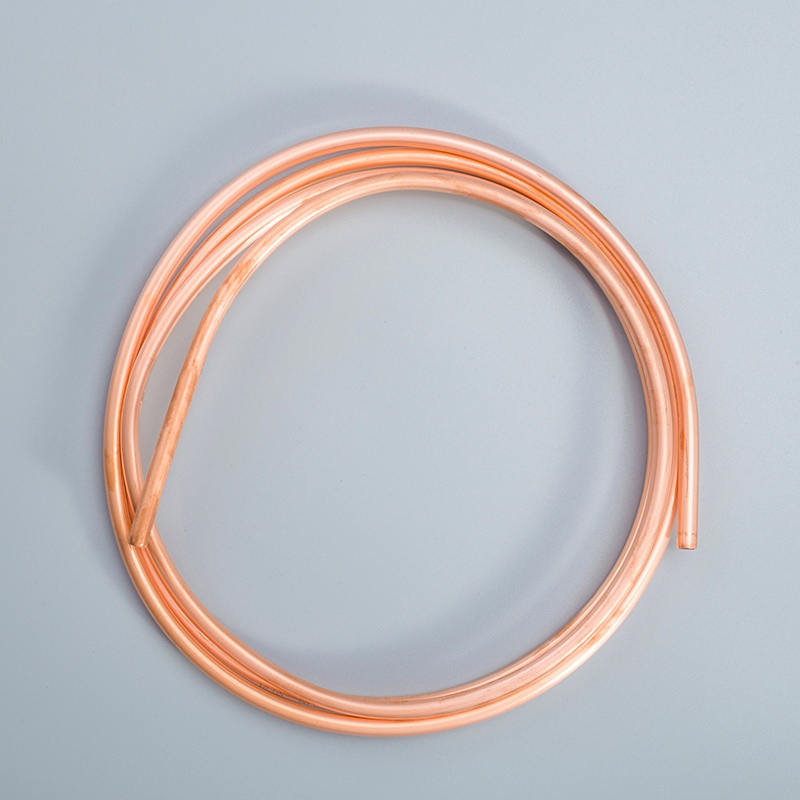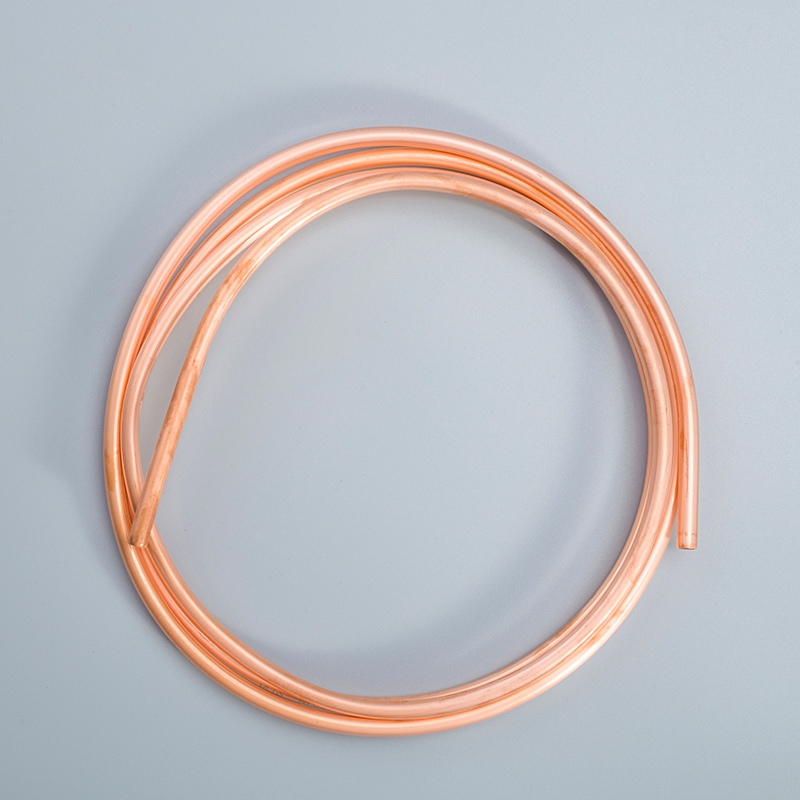1/2 Inch vs 3/4 Inch Copper Pipes: Pros and Cons

Write a 'Pros and Cons' blog post on '1/2 Inch vs 3/4 Inch Copper Pipes'
Copper pipes play a crucial role in plumbing systems, known for their durability and compatibility with both hot and cold water. The choice of pipe size is a key decision that impacts the efficiency of water supply. In this blog, the focus will be on comparing the advantages and disadvantages of 1/2 inch and 3/4 inch copper pipes. By understanding the differences in pressure loss, water supply capacity, flow rate, volume capacity, heat loss, and life expectancy between these two sizes, homeowners and professionals can make informed decisions for their plumbing needs.
Understanding Copper Pipes
What are Copper Pipes?
Types of Copper Pipes:
Type L copper pipes have a thicker wall, making them suitable for residential water supply lines.
Type M copper pipes have a thinner wall, commonly used in above-ground water supply lines.
Common Uses in Plumbing:
Copper pipes are extensively used in plumbing systems for water supply and distribution due to their excellent corrosion resistance.
They are also preferred for natural gas supply lines because of their safety and reliability.
Why Pipe Size Matters
Impact on Water Flow:
The diameter of the pipe directly affects the rate at which water flows through it.
Larger pipes allow more water to flow through, increasing the overall flow rate.
Impact on Pressure:
The size of the pipe influences the pressure within the plumbing system.
Smaller pipes can lead to higher pressure drops compared to larger pipes.
Detailed Comparison of 1/2 Inch and 3/4 Inch Copper Pipes

Pressure Loss
When comparing the pressure loss in 1/2 inch and 3/4 inch copper pipes, it's essential to note that the size difference plays a significant role.
The smaller diameter of 1/2 inch pipes can result in higher pressure loss due to the restricted flow area.
On the other hand, 3/4 inch pipes experience less pressure loss as they allow for a more substantial volume of water to pass through.
Water Supply Capacity
Understanding the water supply capacity of both 1/2 inch and 3/4 inch copper pipes is crucial for efficient plumbing systems.
1/2 inch pipes can typically supply water for up to 3 fixtures, making them suitable for smaller-scale applications.
In contrast, 3/4 inch pipes have a higher capacity and can supply water for up to 6 fixtures, ideal for larger residential or commercial setups.
Flow Rate
The flow rate in copper pipes is directly influenced by their size, with 1/2 inch and 3/4 inch pipes showcasing distinct differences.
Upgrading from a 1/2 inch pipe to a 3/4 inch pipe can roughly double the flow rate, significantly improving water pressure throughout the system.
Larger pipes like the 3/4 inch variant allow for increased flow rates, ensuring efficient water distribution within a property.
Volume Capacity
Volume Capacity of 1/2 Inch Pipes
1/2 inch copper pipes have a limited volume capacity due to their smaller size.
This size can carry approximately half the volume of water compared to larger pipes.
The reduced diameter restricts the amount of water that can flow through, impacting the overall capacity.
Volume Capacity of 3/4 Inch Pipes
In contrast, 3/4 inch copper pipes boast a significantly higher volume capacity.
The larger size allows for a greater volume of water to pass through the pipes efficiently.
With nearly double the diameter of 1/2 inch pipes, they can accommodate more extensive water supply needs.
Heat Loss
Heat Loss in 1/2 Inch Pipes
When it comes to heat loss, 1/2 inch copper pipes exhibit moderate thermal efficiency.
Insulated 1/2 inch tubing loses about 20 BTU/hr./ft due to its smaller diameter.
The reduced surface area contributes to relatively lower heat dissipation compared to larger pipes.
Heat Loss in 3/4 Inch Pipes
On the other hand, 3/4 inch copper pipes experience slightly higher heat loss rates.
Insulated 3/4 inch tubing loses about 30 BTU/hr./ft due to its increased surface area.
Despite this, they remain efficient in maintaining water temperature within plumbing systems.
Life Expectancy
Durability of 1/2 Inch Pipes
The durability of 1/2 inch copper pipes is commendable, offering reliable performance over an extended period.
Type M copper pipes with a nominal size of 3/4 inch have an impressive life expectancy of around 250 years.
Durability of 3/4 Inch Pipes
Similarly, the durability of 3/4 inch copper pipes is exceptional, ensuring long-term functionality without frequent replacements.
Type L copper pipes with a nominal size of 5/8 inch have an even longer life expectancy, lasting approximately up to 300 years.
Pros and Cons of Each Pipe Size
Pros and Cons of 1/2 Inch Copper Pipes
Advantages
Cost-Effective: 1/2 inch copper pipes are more budget-friendly compared to larger sizes, making them a practical choice for smaller plumbing projects.
Space-Saving: The compact size of 1/2 inch pipes allows for easier installation in tight spaces, ideal for renovations or areas with limited room.
Ease of Handling: Due to their lighter weight and flexibility, 1/2 inch copper pipes are easier to maneuver during the installation process.
Disadvantages
Limited Capacity: The smaller diameter of 1/2 inch pipes restricts the amount of water flow, which may not be sufficient for high-demand applications.
Higher Pressure Drop: Smaller pipes can lead to increased pressure drops, affecting the overall water pressure at fixtures.
Potential Clogging: The reduced size increases the risk of clogs from debris or mineral buildup, requiring more frequent maintenance.
Pros and Cons of 3/4 Inch Copper Pipes
Advantages
Improved Water Flow: Upgrading to 3/4 inch copper pipes enhances water flow throughout the plumbing system, ensuring better performance at multiple fixtures simultaneously.
Higher Capacity: With a larger diameter, 3/4 inch pipes can accommodate higher water volumes, making them suitable for larger households or commercial settings.
Reduced Pressure Loss: The increased size minimizes pressure loss within the system, providing consistent water pressure even in properties with multiple fixtures.
Disadvantages
Higher Cost: Compared to smaller sizes, 3/4 inch copper pipes come at a higher price point due to the increased material required for manufacturing.
Space Requirements: The larger dimensions of 3/4 inch pipes may pose challenges in tight spaces or existing structures with limited accessibility.
Installation Complexity: Handling and installing 3/4 inch pipes may require additional expertise and effort due to their heavier weight and bulkier nature.
Recommendations Based on Different Scenarios

Best Scenarios for Using 1/2 Inch Pipes
For smaller residential properties with minimal water demand, 1/2 inch copper pipes are an ideal choice.
These pipes are suitable for basic plumbing setups where the water requirement is limited to a few fixtures.
In scenarios where space constraints are a concern, such as in compact apartments or renovation projects, 1/2 inch pipes offer a space-saving solution.
Homeowners looking for a cost-effective option without compromising on quality can benefit from using 1/2 inch copper pipes.
When the plumbing system requires precise and controlled water flow for specific applications, 1/2 inch pipes provide the necessary capacity.
Best Scenarios for Using 3/4 Inch Pipes
Larger residential properties or commercial buildings with high water demand benefit from the superior capacity of 3/4 inch copper pipes.
In scenarios where multiple fixtures need to operate simultaneously without compromising water pressure, upgrading to 3/4 inch pipes is recommended.
Properties with extensive plumbing networks that require efficient water distribution and flow rate should consider using 3/4 inch copper pipes.
When long-term durability and minimal maintenance are essential factors, 3/4 inch pipes offer a reliable solution for sustainable plumbing systems.
Upgrading to 3/4 inch pipes is advantageous in situations where future expansions or increased water usage are anticipated, ensuring optimal performance and longevity.
In conclusion, the choice between 1/2 inch and 3/4 inch copper pipes is crucial for optimal plumbing performance.
Homeowners should consider the specific water needs of their property to determine the most suitable pipe size.
For smaller setups with limited fixtures, 1/2 inch pipes offer a cost-effective solution.
Conversely, larger properties or commercial buildings benefit from the enhanced capacity of 3/4 inch pipes.
Ultimately, selecting the right pipe size ensures efficient water distribution and long-term durability in plumbing systems.
See Also
Choosing Between 1 1/2 Inch and 1/2 Inch Copper Pipes
The Complete Handbook on 1/4 Inch Copper Pipe Usage
Uncovering Top Offers for 1/2 Inch Copper Pipes


